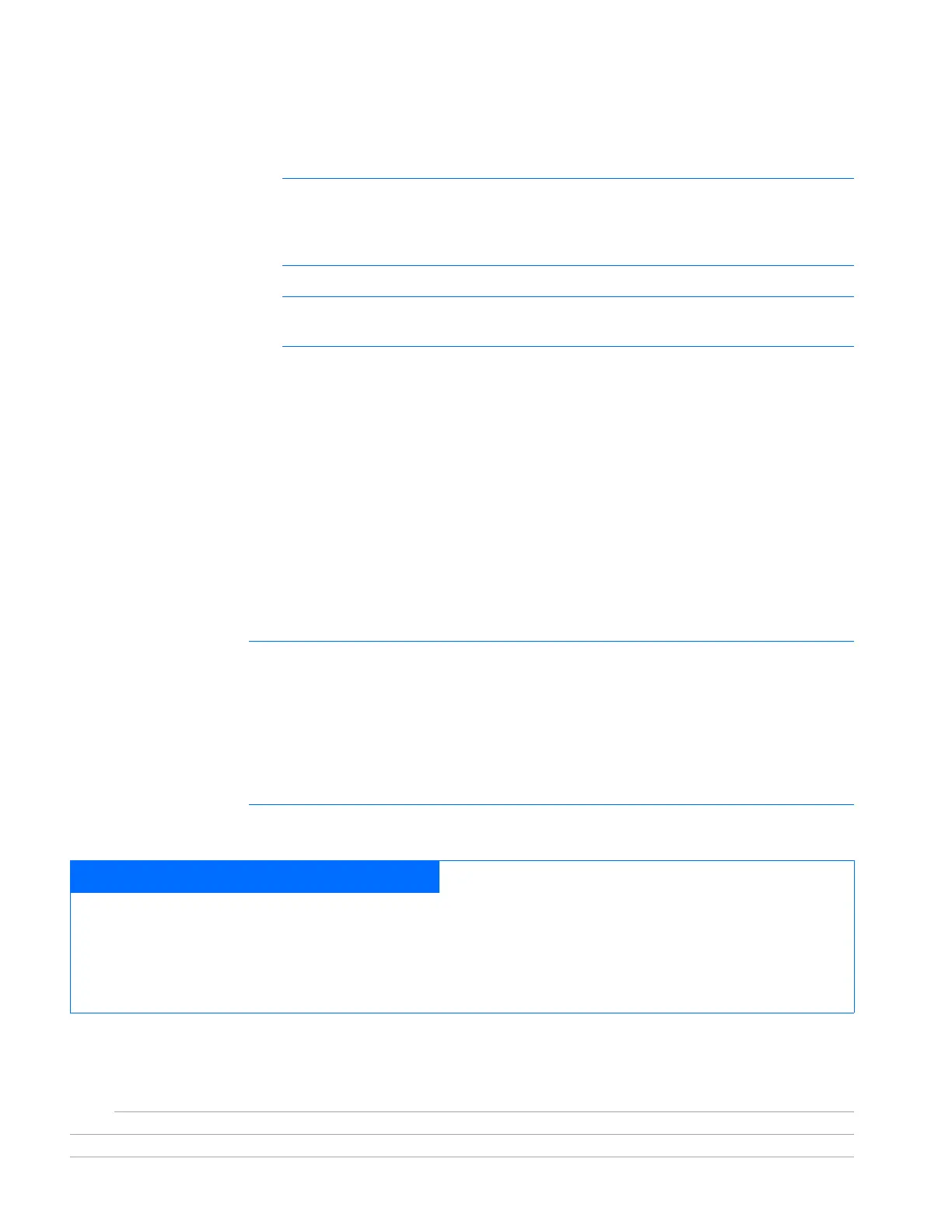Appendix A
80 Applied Biosystems 7300/7500/7500 Fast Real-Time PCR System Relative Quantification Getting Started Guide
Notes
5. In the Reporter Dye and Quencher Dye drop-down lists, select the appropriate dyes
for the detector.
Note: The dyes that appear on the Reporter and Quencher Dye lists are those that
have been previously entered using the Dye Manager. If the dye that you want to
use does not appear in a list, use the Dye Manager to add the dye and then return to
this step in this procedure. Refer to the Online Help for more information.
Note: Select TAMRA as the quencher for TaqMan
®
probes and None for TaqMan
MGB probes.
6. Click the Color box and select a color to represent the detector using the Color
dialog box.
7. Optionally, click the Notes field, then enter any additional comments for the
detector.
8. Click Create Another if you want to create another detector.
9. Click OK to save the detector and return to the Detector Manager.
10. Repeat steps 2 through 9 for the remaining detectors.
11. In the Detector Manager, click Done when you finish adding detectors.
Note: TaqMan
®
Genotyping Assays are shipped with an assay information file (AIF).
This text-based file contains information about the assays that you ordered, including the
Applied Biosystems Assay ID number, well-location of each assay, primer
concentration, and primer sequence. The file also indicates the reporter dyes and
quenchers (if applicable) that are used for each assay. When creating detectors, you use
the reporter dye and quencher information (and optionally, the gene name or symbol for
the sample name). You can view the contents of AIFs in a spreadsheet program, such as
Microsoft Excel.
Sample Experiment
In the example RQ experiment, a detector is created for each target gene and the endogenous control. 24 detectors are
created: 23 for the target genes and 1 for the endogenous control, GAPDH.
For example, the detector for the ACVR1 gene is named ACVR1 and assigned a yellow color. Because all TaqMan
®
Gene
Expression Assays have probes that are labeled with FAM
™
dye, FAM was selected for the reporter dye. Additionally,
TaqMan Custom Gene Expression Assays use TaqMan MGB probes, which use nonfluorescent quenchers. “None” is
selected for the quencher dye.

